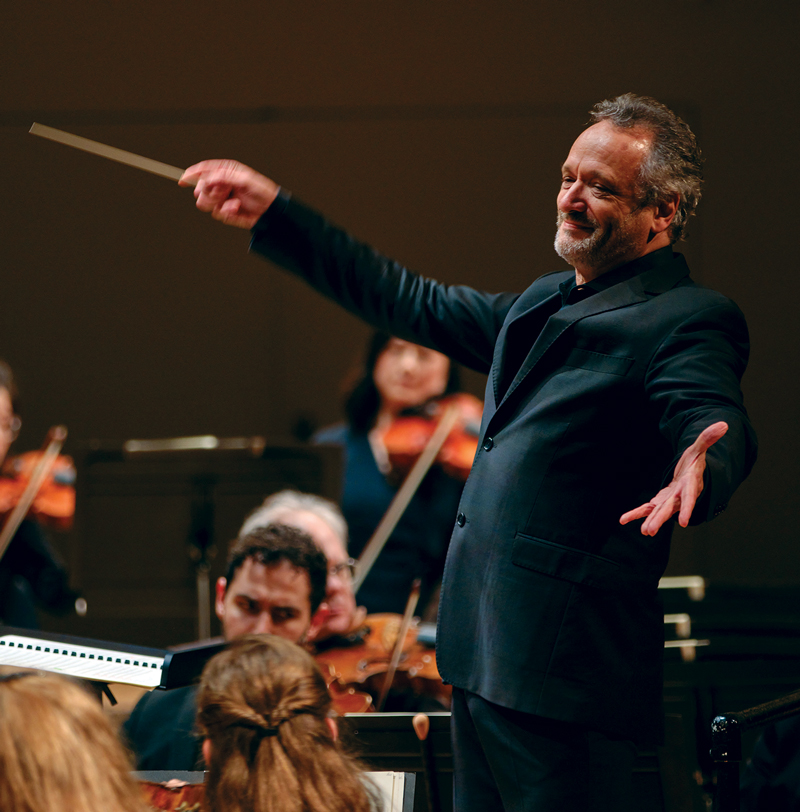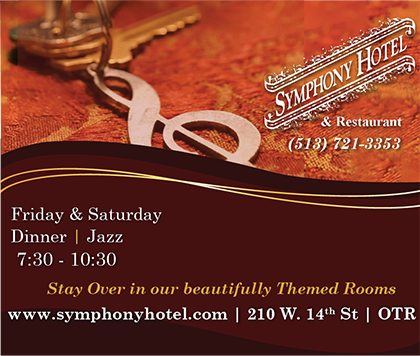Louis + Brahms, A Shock of Discovery
by Ken Smith
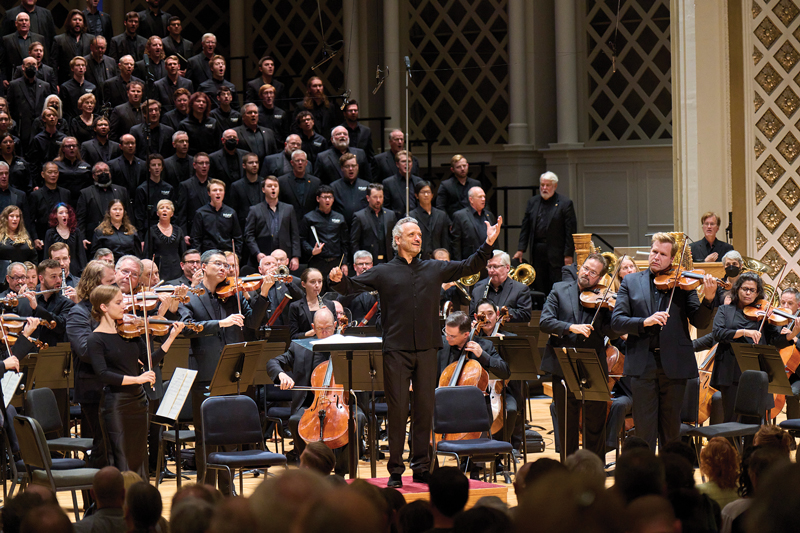
When Louis Langrée first encountered Brahms’ A German Requiem, as a student at the Strasbourg Conservatory, he was so overwhelmed that he attended every rehearsal. Although Langrée had played many of the composer’s solo piano pieces, lieder and chamber works—and through his father, an organist and choirmaster, knew a wide range of liturgical repertoire—the future conductor found himself in a different dimension entirely. “It was so mysterious,” he recalls. “Was it concert piece? A ritual? As a teenager, it was a shock of discovery.”
Much in the spirit of Brahms himself—who may have conceived the piece after the death of Robert Schumann in 1856, but didn’t start writing it until his mother died nine years later—Langrée waited to conduct the Requiem until the late 1990s. “The Requiem took a long time for Brahms to compose, and was so personal,” he says. “But it was the piece that first gave him the stamp, along with Bach and Beethoven, as one of the three ‘Bs’.” This may also partly explain why Brahms’ Requiem also marks Langrée’s final appearances with the May Festival Chorus as Cincinnati Symphony Orchestra Music Director on February 9 through 11.
Much of the Requiem’s challenge for any conductor, he claims, is finding a proper balance between orchestral richness and vocal expression. “With symphonic music, you generally worry about form and shape and contrast,” he explains. “In this case, the text leads the tempo, the color, the meaning. You need to figure out exactly what you’re singing, why you’re singing it, and to whom you’re singing, or else you simply have a pointless, generic intensity.”
“With nearly any choral piece—any music for voices, really—the text came first,” agrees Robert Porco, the May Festival’s Director of Choruses. “Brahms wasn’t necessarily a churchgoing guy, but he scoured his New Testament. Nearly every movement has a textual progression—grief, but also hope—that is impeccably thought out. And on a musical level, there’s Brahms’ incredible melodic gift—everybody gets a melody; if you’re an alto singing Brahms, you’re in heaven—but also superb craftsmanship. A three-note motif reappears in every movement, sometimes upside down. There are no wasted notes. The trendy word would be ‘organic,’ but really, everything is connected, and exactly where it belongs.”

Porco and Langrée may vary in their descriptions of Brahms’ music—Langrée compares the violinless first movement to “a large viola da gamba” while Porco calls it “an art song for chorus”—but on the finer points they’re on the same page. “With Louis, I think we have that ideal balance,” Porco says. “We tend to agree on a lot of things, especially on following the natural flow of the text. In America, we often think that all quarter notes are equal, but in reality, they simply are not. That type of thinking goes against everything Brahms was doing.”
“Brahms doesn’t offer us much direction,” says Langrée. “On the contrary, he gives us practically nothing, so that we have to make choices—even whether or not to use the organ, where he just writes ad libitum. At the same time, there aren’t many places where you say, ‘This is where I take that option.’ It’s more a case of always going deeper in the same direction, and figuring out how much deeper you can go.”
The Requiem’s non-liturgical nature didn’t go over well at first, especially with the German clergy. An early performance of the work-in-progress added bits of Handel’s Messiah just so listeners would feel suitably pious. “Brahms himself said he could just as easily have called this a ‘Humanist’ Requiem,” says Langrée. “It was about providing consolation. Instead of Jesus, it was about all of us, starting with himself.”
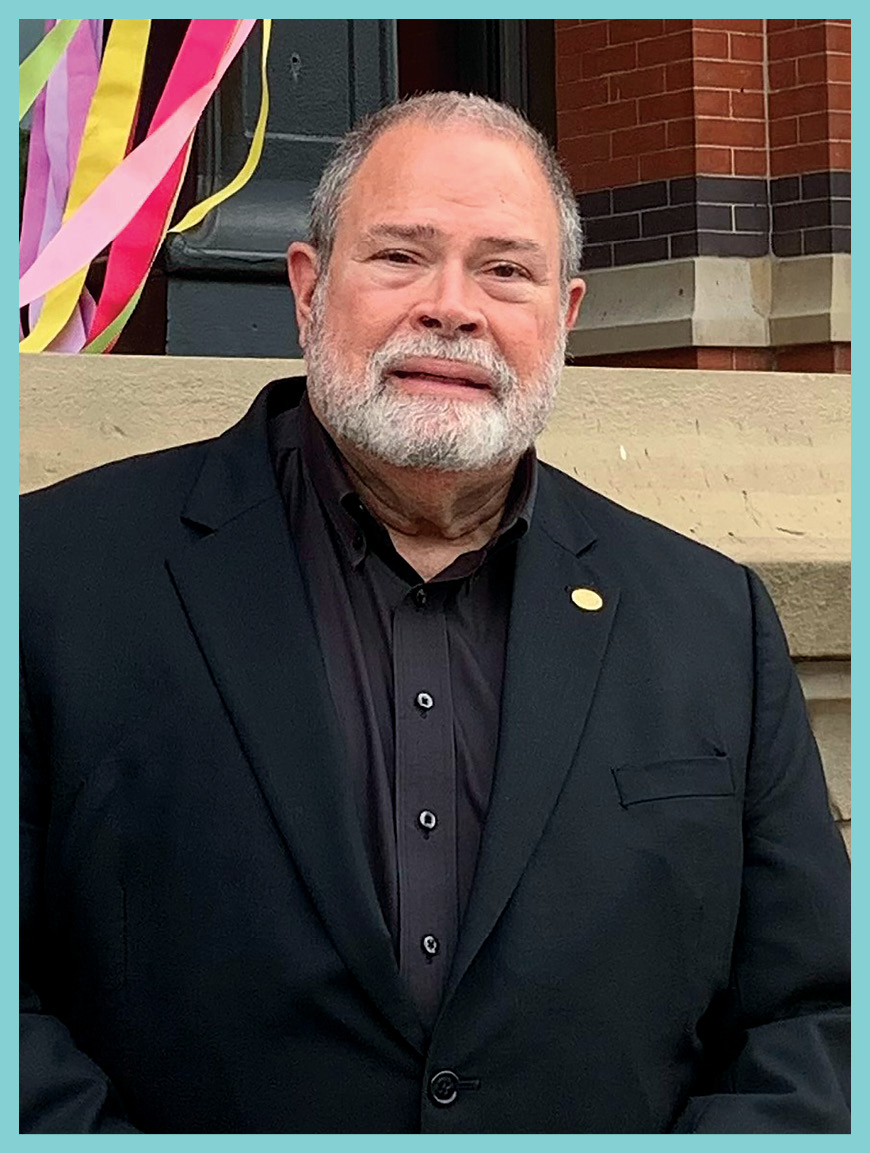
Steve Dauterman, a member of the May Festival Chorus since 1981, puts it slightly differently. “First of all, it’s a very Protestant Requiem,” he says. “With Mozart or Duruflé or Verdi, it’s basically, ‘Keep me out of Hell!’ Brahms wrote a requiem for the living.”
The piece’s sense of consolation, he adds, has become part of May Festival history for some time. “In 1986, the Brahms Requiem was the first piece we sang with Jesús López Cobos, whose second wife had just passed away,” Dauterman recalls. “The piece was programmed years in advance, but the timing helped make those performances memorably tender and touching.”
Of the three Brahms performances Dauterman sang under longtime May Festival Music Director James Conlon, one occurred after the recent death of one of Conlon’s parents. The second was Conlon’s last-minute replacement for Robert Shaw in 1993, after Shaw’s wife had been diagnosed with late-stage breast cancer. When Shaw eventually conducted in Cincinnati four years later, his last appearance with the May Festival Chorus, the pain of her death was still palpable from the podium. “That performance was particularly memorable,” he claims. “It was terribly slow—maybe the slowest rendition I’ve ever heard—but it was the most accurate rhythm we ever had.”
The most recent, in May 2012 under James Conlon, was especially comforting for Dauterman himself, who had just lost his father earlier that year. “The Brahms Requiem has become a favorite piece for many of us in the Chorus,” he says, “and it was really meaningful to find out that it would be the last piece that we’d do with Louis as CSO Music Director.”
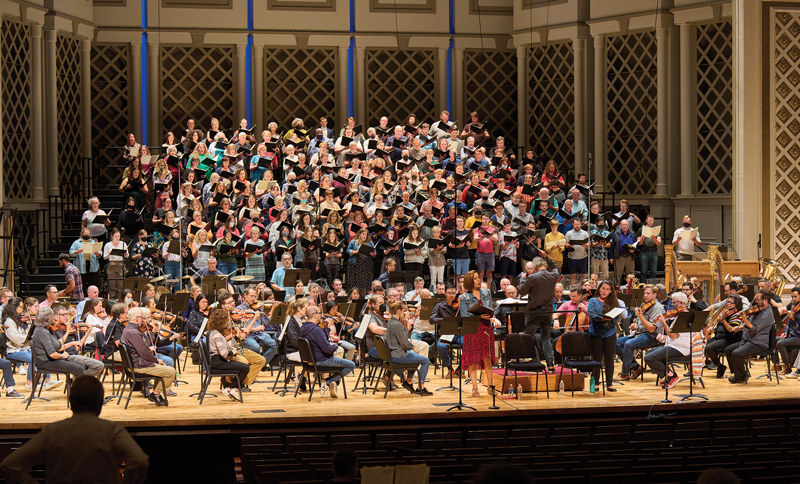
Langrée has noted a particular significance for the piece in Cincinnati—a sentiment that Dauterman echoes. “Something about the German text in this piece resonates heavily with me, and seems to blend well with the city’s history,” he claims. “You only have to go to Over-the-Rhine to be surrounded by the remnants of German heritage here.”
But for Langrée, the piece is ultimately about transcending culture and chronology, and “finding a balance” has as much to do with its compositional elements as with its musical forces. “The Requiem is totally a Romantic piece, with a big orchestra,” he says. “At the same time, Brahms pays homage to Baroque instrumentation and texture, particularly counterpoint. Actually, it’s more of a cantata, drawing influences from Schütz and Bach—even setting some of the same texts they did—and yet the piece also has a visionary aspect. Even Schoenberg wrote an essay with the title ‘Brahms the Progressive.’ The difficulty is not technical, but rather how to include all of these aspects while finding unity in them.”
Porco concurs with the Requiem’s place in the repertory (“not without precedent, but a much more complete statement,” he says).
Rather, he says, the piece’s durability lies in its universality. “Brahms had a very clear vision of what he wanted: a Requiem that wasn’t all—or even a little bit—about damnation,” Porco maintains. “I usually don’t talk much about religion in rehearsals—well, maybe the Catholic tradition in Italy when we do the Verdi Requiem, because you have to know where that’s coming from—but most people are in some way spiritual, and Brahms allows room for that. The references might be from the New Testament, but spiritually they speak to everyone.”
